South Korea 3T's weapon - "Test-Trace-Treat"- to fight COVID-19.
South Korea was among the first countries to be affected by a novel coronavirus. Scrolling the news in the media, adulation for South Korea's successful strategy to contain the coronavirus has been spreading like wildfire. South Korea's response to COVID-19 has become a sign of hope and a potential model to follow.
Lesson learned from MERS outbreak
The largest Middle East Respiratory Syndrome coronavirus or (MERS-Cov) outbreak outside of the Middle East took place in South Korea in 2015. According to the World Health Organization (WHO), approximately 35% of reported patients with MERS-CoV infection have died. At the time of the MERS outbreak, South Korea was not fully prepared as they had no clue who got infected and which hospitals had MERS cases. The government was criticized for not providing enough information and were slow to recognize the risk of MERS-Cov. Right after the MERS-CoV outbreak settled, South Korea revamped its legal framework enacting the Infectious Disease Control and Prevention Act for disease prevention.
Unlike China's top-heavy lockdown measures in Wuhan, South Korea adopted a unique democratic model to combat the novel coronavirus. The government took bold action by providing an early warning when the corona outbreak started to emerge from Wuhan, China in January. South Korean government set in a 24/7 emergency response system to screen all travelers entering the country. The coronavirus cases in South Korea and the USA were detected on the same day but there is a stark difference in how two countries handled the public health crisis. By now, the United States outpaced South Korea in terms of test per confirmed cases, but the death cases per 1 million are upside down. As of May 29, the death cases in the USA have reached near to 312 per 1 million population, whereas the death cases in South Korea is only 5 per 1 million population. South Korea capitalized three weapons, namely, Test, Trace, and Treat to stop the spreading of the virus.
Rapid Testing
Testing during the MERS outbreak was complicated because it took hours to confirm a case with a lab-based diagnostic. This time South Korea authorized an unlicensed Covid-19 test. This is the main reason behind South Korea's secret of testing a large number of people. The country set up massive walk-in and drive-through test centers for reception, counseling, and specimen collection. The government made it compulsory to report citizen's health conditions, especially those who are entering the country.
High-Tech Tracing:
Leveraging digital technology, the Korean government actively communicated information on how to avoid infections via official websites and text messages. The government came up with easy to use self-diagnosis mobile application. A smartphone tracking app called "smart city" stored the database of thousands of people infected by the new coronavirus and their contacts. Electronic bracelets helped to track people breaking quarantine laws. The Korean government traced the coronavirus cases via credit card transactions, CCTV recordings, and GPS data on mobile phones. Some human rights groups had expressed concern over privacy. In reply to that, the government said that information is collected before citizens' consent. Moreover, after collecting data, the government anonymized the information and then revealed it to the public. The mobile application made it easier to visualize the information on which citizens could easily track when and where infected people left their footprints.
Treating:
After testing and tracing, the acute cases were instantly hospitalized for treatment. The moderate cases were isolated and monitored at treatment support centers. For example, the elders and patients with serious illness were directly sent to the hospital whereas mildly sick patients were sent to isolation dorms. Health officials monitored the patient's symptoms twice a day and they have kept up the continuity.
The coronavirus was controlled until mid-February smoothly. All of a sudden, a secret gathering at Shincheonji Church of Jesus and River of Grace Community Church on February 16 and early March respectively, ended up becoming the epicenter of South Korea's coronavirus outbreak. Prosecutors confirmed that about 60 percent of the coronavirus confirmed cases were linked to the church. This incident revealed a loophole of South Korea's public health emergency system. Despite the government's guideline for social distancing, the church held its services. All the efforts to contain COVID-19 transmission go to vain and ignites a massive outbreak if a single unsupportive group or person does not follow the guideline on social distancing. Interestingly, this gave rise to a new debate on whether religious events should be restricted during the emergency. As a democratic country, the South Korea constitution guarantees freedom of religion. Later, the head of the Shincheonji Church publicly apologized by getting into his knees and bowing at the news conference. South Korean government also relaxed restrictions imposed on religious gatherings and were informed to become cautious of their actions. Regardless of whether or not a citizen showed any symptom, patients placed under self-quarantine were forbidden from leaving the country for 14 days. Moreover, the violation of self-quarantine regulations will result in up to a 10-million Korean won fine or one year in prison in South Korea.
Lesson for Nepal
Nepal is in lockdown for more than two months. As the confirmed cases are increasing in Nepal along with strict lockdown measures, it seems that another wave of lockdown is just around the corner. In Nepal, Parsa District Administration went on to take some highly disproportionate measures i.e. to allow security personnel to open fire on any infected patients who try to escape the isolation ward. However, the decision was revoked after a strong criticism. Moreover, Kathmandu District Administration published a notice stating that strict actions will be taken if citizens roam in the street unnecessarily. To increase testing, Kerala, a coastal state in India, inspired by South Korea, started developing a walk-in sample collection called kiosks, where health workers are not required to wear personal protective gear. Nepal can adopt a similar method to ramp up testing all over the country. If Nepal is to follow the South Korean model, the first thing Nepal should undertake is to ramp up testing and slowly loosen the lockdown. Lockdown is a temporary means to contain the virus. We have to plan in an innovative way to keep our economy going.
Civic awareness and voluntary cooperation between government and citizens helped South Korea in preventing the spread of the coronavirus. The country successfully held parliamentary elections in mid-April at the time of the pandemic. It all bogs down to citizens to defeat the coronavirus pandemic. The important question here is will we have civic awareness like South Korea if the government decides to loosen the lockdown? I observed the vegetable markets in Kathmandu, people there do not seem to adopt strict social distancing measures i.e. maintain a distance of at least 1 or 2 meters. Photos are circulating in the social media where social distancing measures have not been adopted when standing in queue for testing. Nepali needs to realize that a single person not adhering to a basic social distancing measures and wearing a mask can ignite a massive outbreak. World Health Organization (WHO) alerted that the coronavirus may never go away. Therefore, simple measures such as social distancing, wearing masks, and washing hands should be people's regular habit to be safe from the deadly virus. People’s lifestyle will not be the same again. People have to get used to with the new normal until world comes up with a definite solution to eradicate the corona virus.
Lastly, the South Korea government is closely working with the private sector to find long-term solutions to eradicate the virus. South Korea's pandemic control model of "Test-Trace-Treat" is found to be the most effective and Nepal along with the international community can largely benefit if applied properly.

